Hockey's All-Time Classic Lines
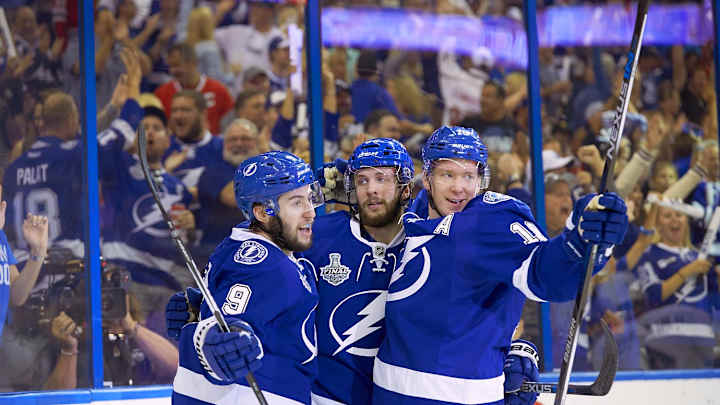
Hockey's All-Time Classic Lines
Production Line (Detroit Red Wings) — Gordie Howe, Sid Abel, Ted Lindsay
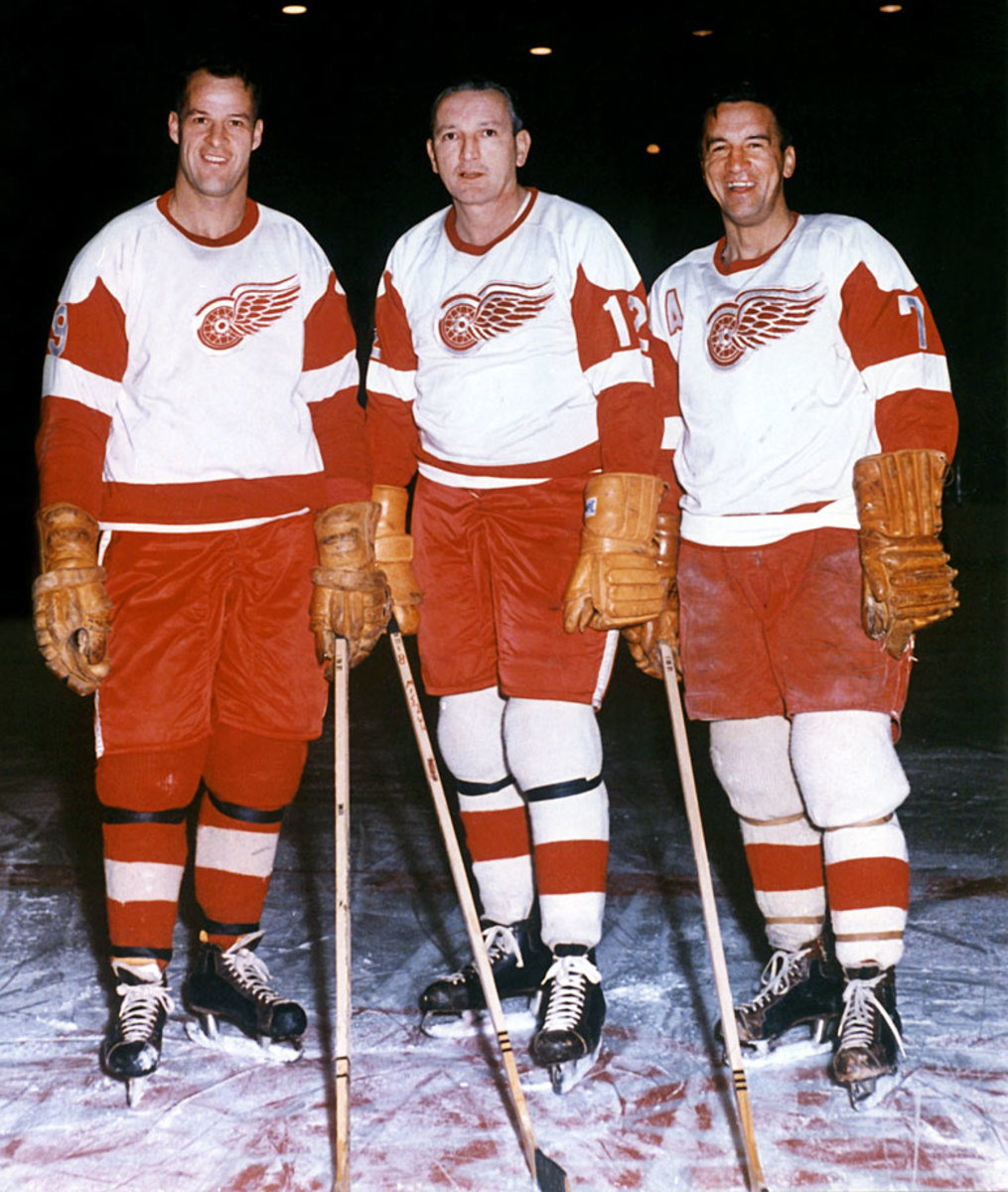
The Production Line was a natural for a city loaded with auto assembly plants, and the trio of left winger "Terrible Ted" Lindsay, center "Boot Nose" Abel (an alumnus of Detroit's Liniment Line with Don Grosso and Eddie Wares) and right winger Howe was a classic of power and proficiency. They finished 1-2-3 in scoring in 1949-50 as the Wings won the Stanley Cup, and boasted two of the NHL's top three scorers in three of the next four seasons.
Million Dollar Line (Chicago Blackhawks) — Bobby Hull, Bill Hay, Murray Balfour
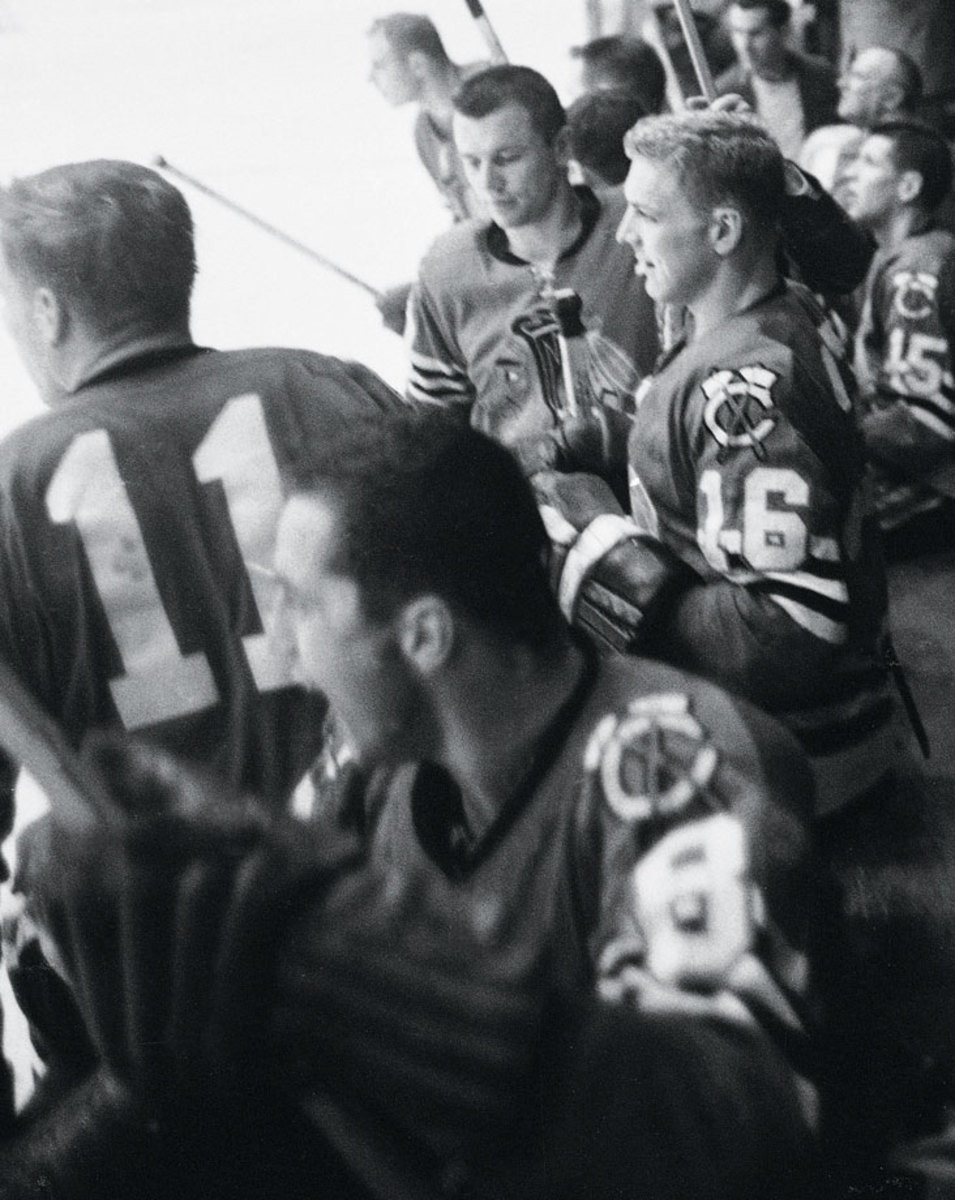
The purchase of right winger Balfour from Montreal in 1959 made this nickname a natural when he was teamed with the high-salaried duo of left winger Hull and center Hay. The trio led the Hawks to the 1961 Stanley Cup. Hull later skated on the Winnipeg Jets' Hot Line with center Ulf Nilsson and right winger Anders Hedberg after accepting a million dollar contract to join the World Hockey Association in 1972.
Kraut Line (Boston Bruins) — Bobby Bauer, Woody Dumart, Milt Schmidt
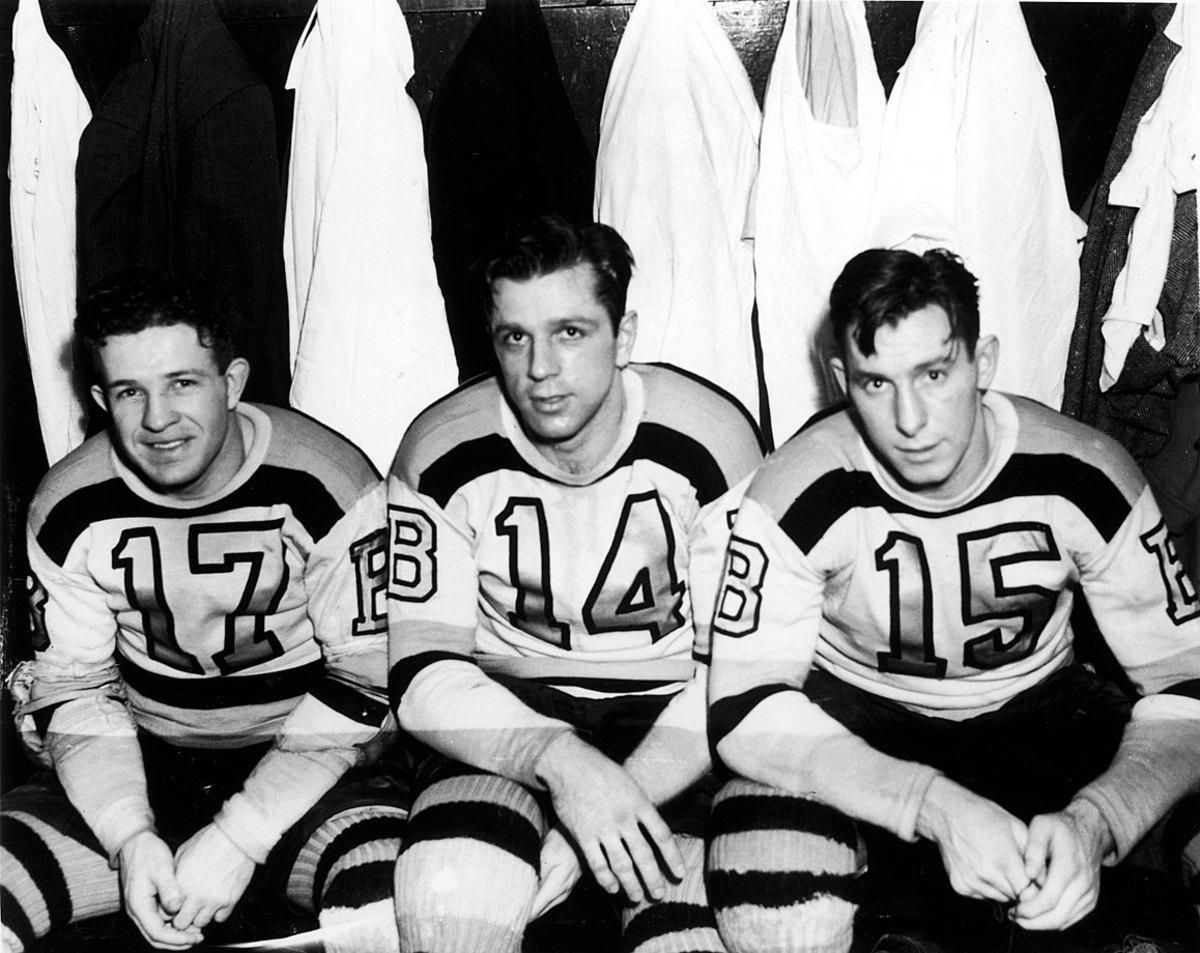
This trio of proud German heritage powered the Bruins through the late 1930s and into the mid-'40s. In 1939-40, the Kraut Line became the first to ever finish 1-2-3 in league scoring with center Schmidt tallying 52 points, left winger Dumart 43, and right winger Bauer 43.
Punch Line (Montreal Canadiens) — Maurice Richard, Elmer Lach, Toe Blake
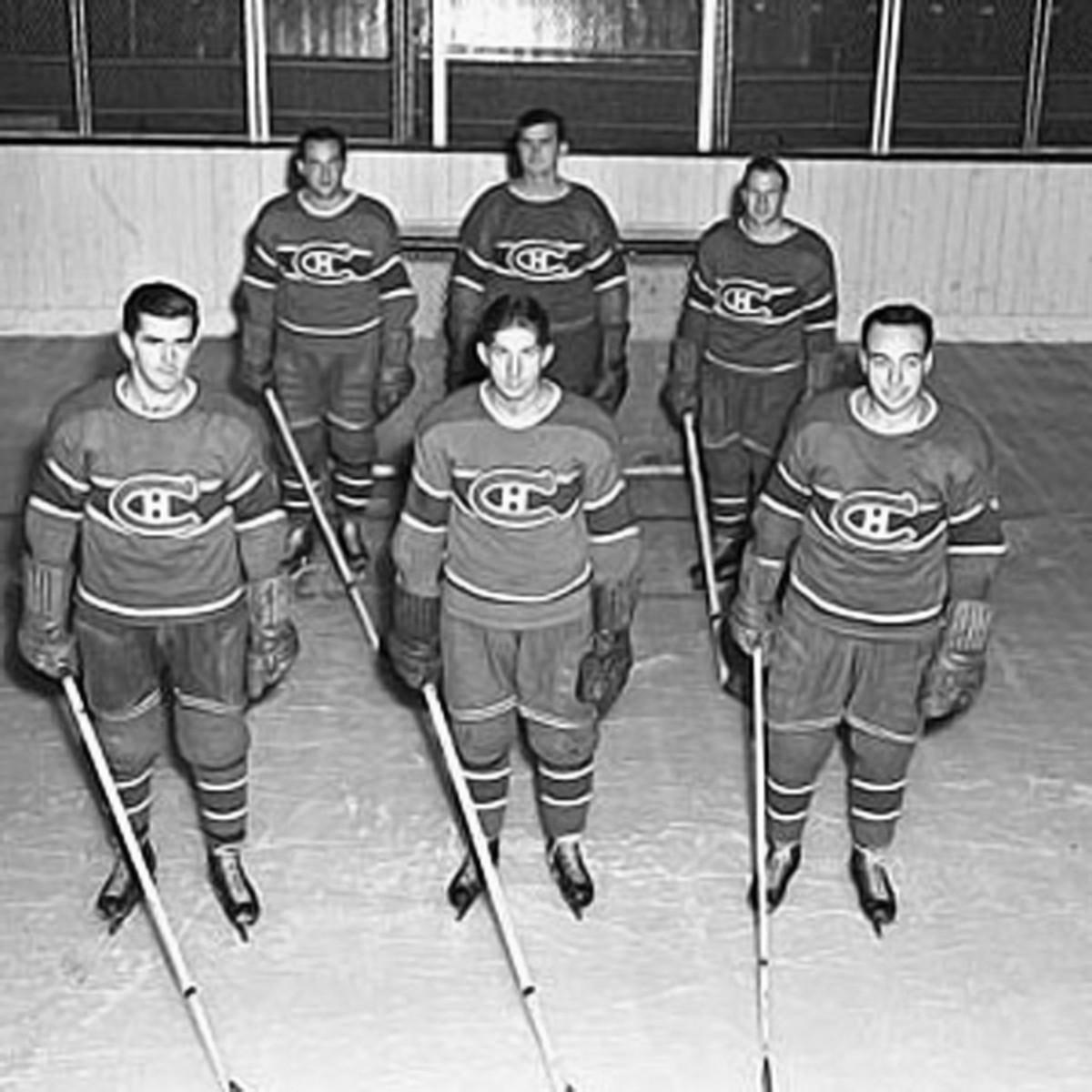
Montreal's famed trio finished 1-2-3 in scoring in 1944-45, with center Lach putting up 80 points, right winger Richard 73 and left wing Blake 67. The line was also a key component of two Stanley Cup championship teams.
French Connection (Buffalo Sabres) — Rick Martin, Rene Robert, Gilbert Perreault
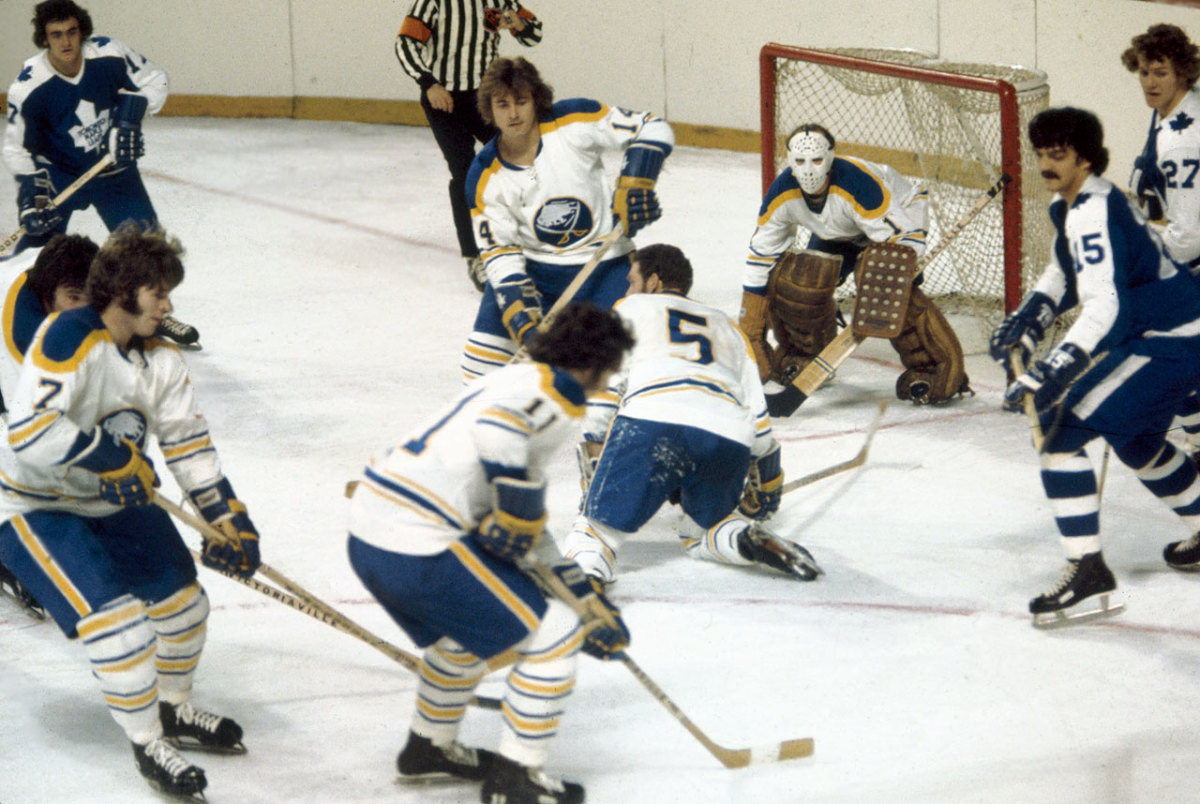
Named for the popular movie and their Gallic flavor, the potent offensive trio of left winger Martin, center Perreault, and right winger Robert skated as a unit from 1972 through '79 and led the Sabres to the 1975 Stanley Cup Final.
Triple Crown Line (Los Angeles Kings) — Dave Taylor, Marcel Dionne, Charlie Simmer
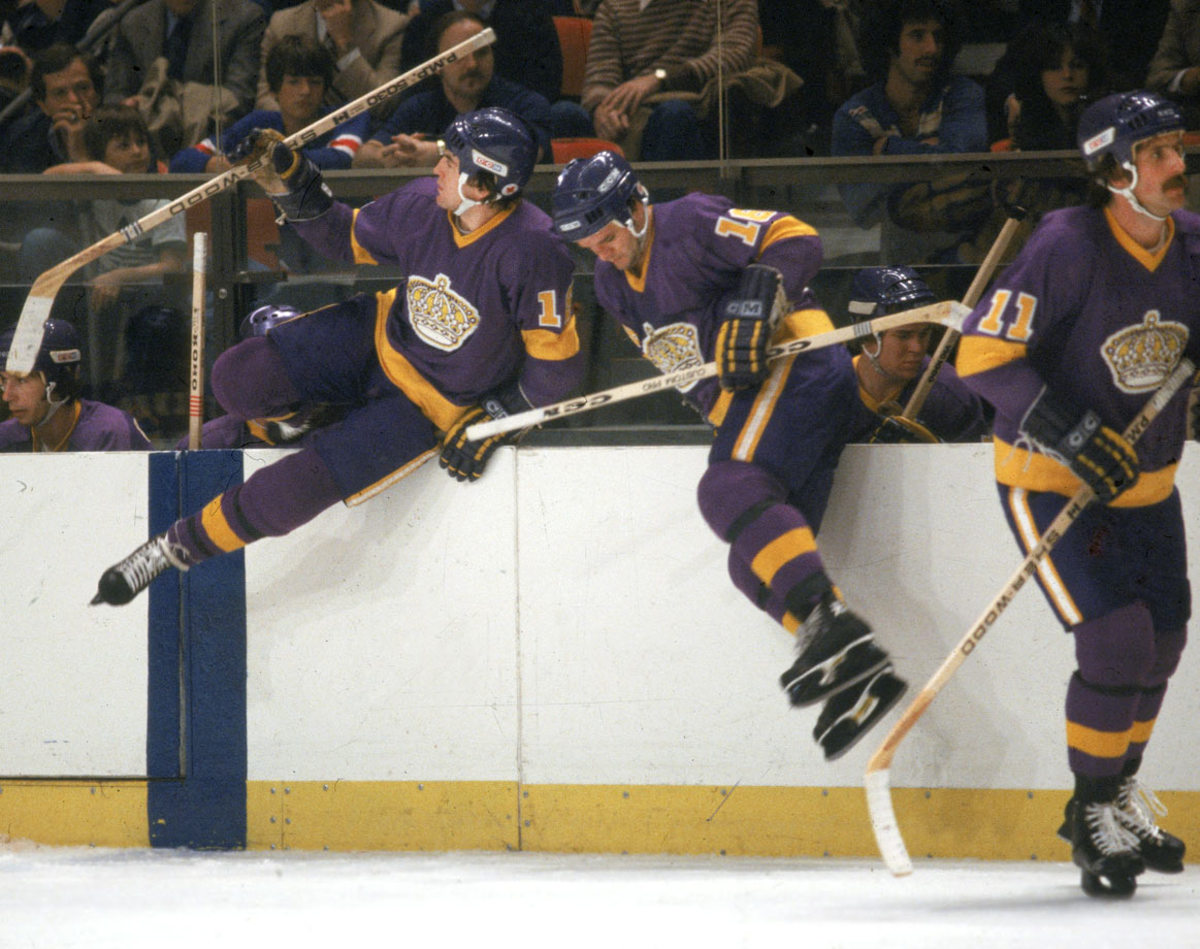
This regal line was formed in January 1979 when center Dionne was teamed with second-year right winger Taylor and left winger Simmer, who went on to become one of league's most prolific units. In 1979-80, the line produced 146 goals and 328 points and played in the NHL All-Star Game at the Montreal Forum.
GAG Line (New York Rangers) — Vic Hadfield, Jean Ratelle, Rod Gilbert
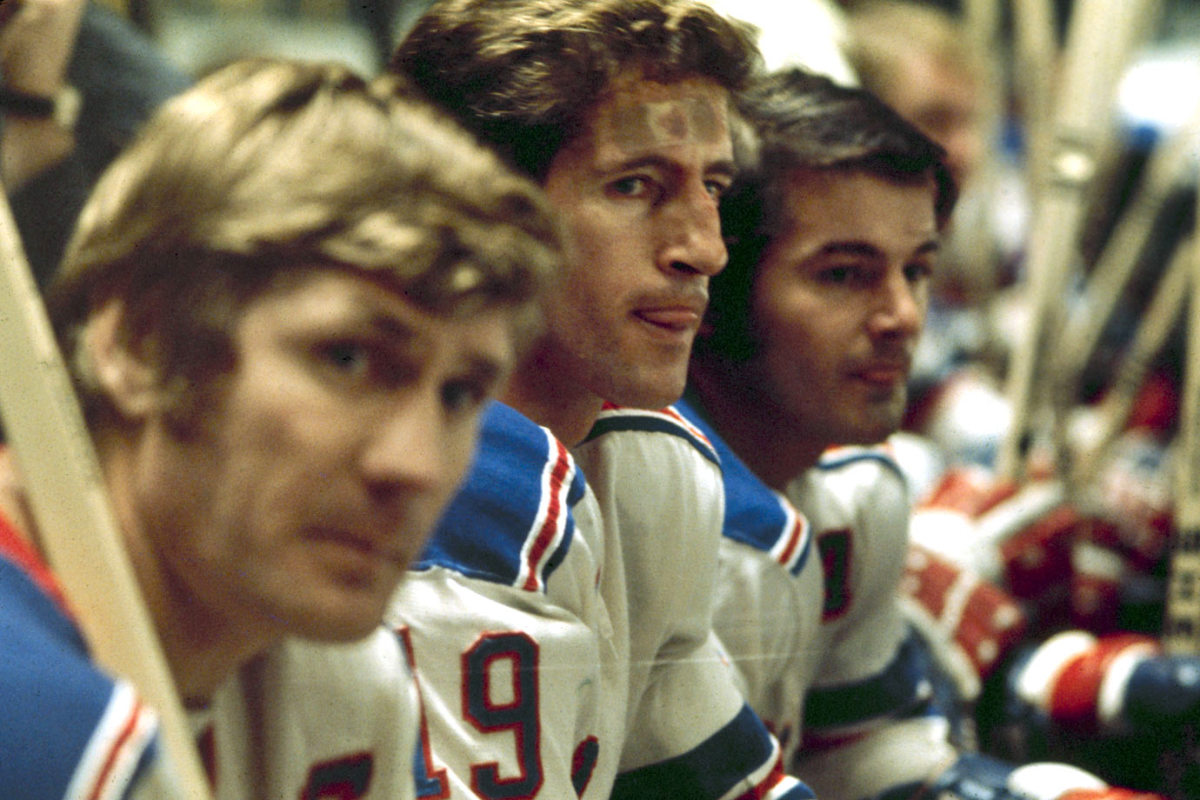
No joke to opponents, Broadway's brightest line of the early 1970s was named for the goal-a-game production of slick playmakers Ratelle and Gilbert and bruising left winger Hadfield.
Dynasty Line (Montreal Canadiens) — Steve Shutt, Guy Lafleur, Jacques Lemaire
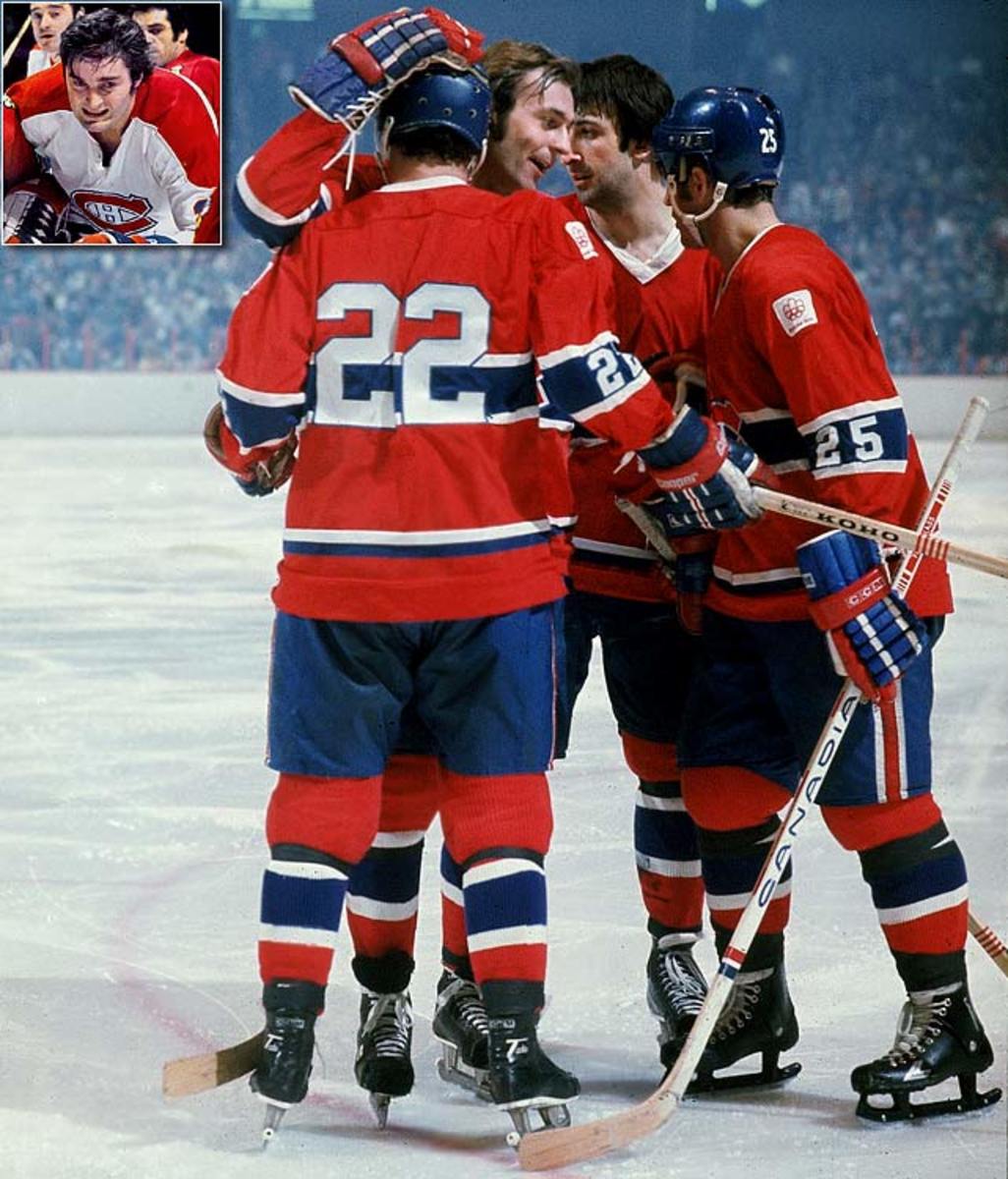
Peter Mahovlich (inset) occasionally took Lemaire's place; inspiring Shutt to call it the Donut Line because it had no firm center. Through the 1970s, the flashy Lafleur, hardnosed Lemaire and opportunistic Shutt helped the Habs win five Stanley Cups, including four in a row.
Nitro Line (Boston Bruins) — Phil Esposito, Ken Hodge, Wayne Cashman
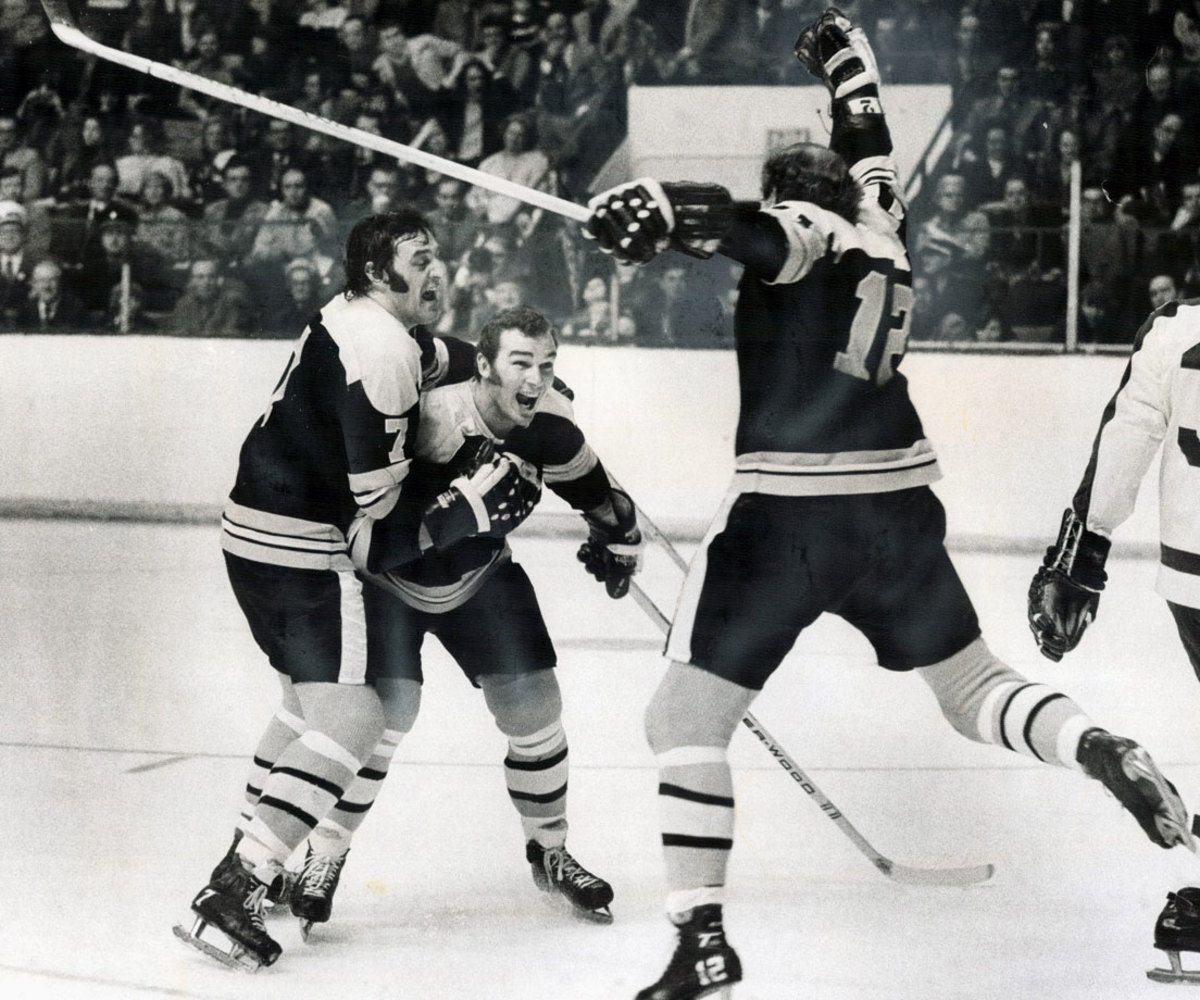
The Big Bad Bruins' explosive trio of the late 1960s and mid-'70s propelled Boston to two Stanley Cups.
LILCO Line (New York Islanders) — Clark Gillies, Bryan Trottier, Mike Bossy
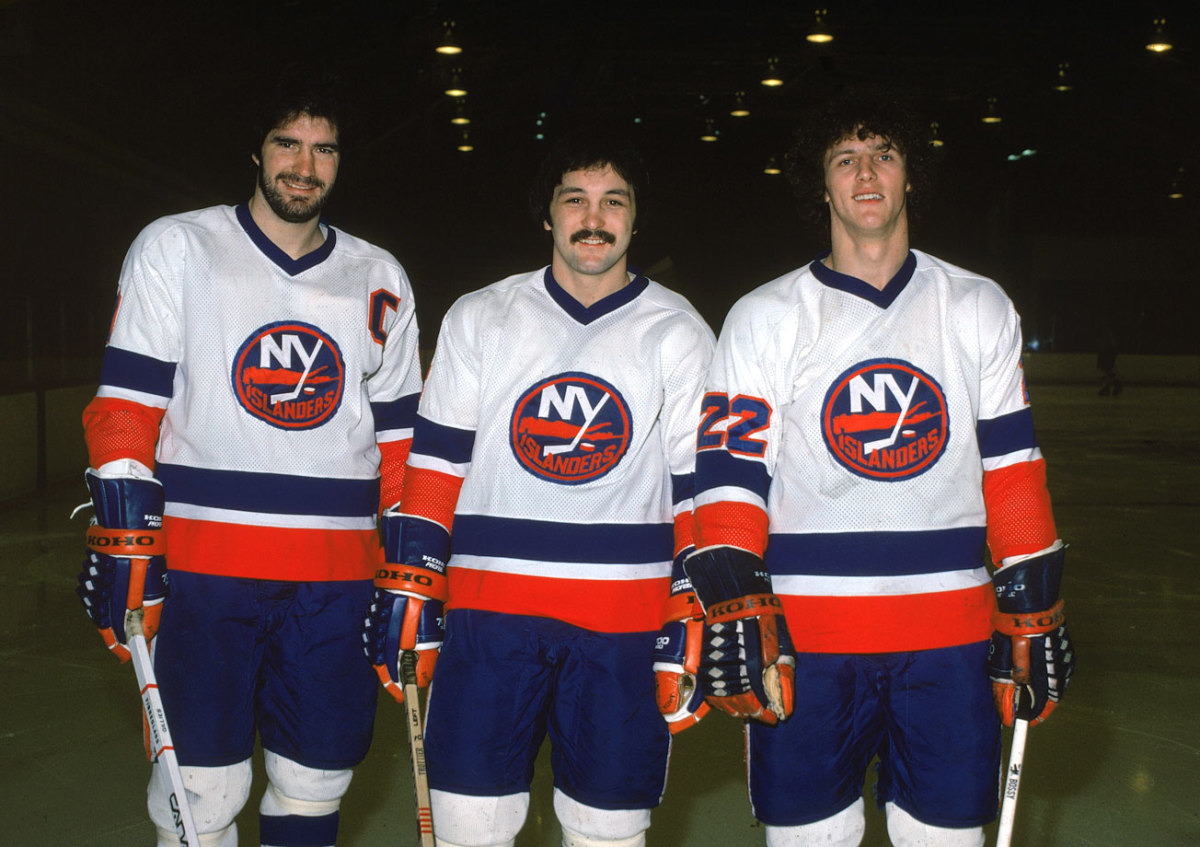
Named for the Long Island Lighting Company power conglomerate, these three Hall of Famers kept goal lamps lit from the mid-1970s through early `80s, winning four successive Cups in the process. The line was also called Trio Grande, for obvious reasons.
Banana Line (New York Islanders) — Wayne Merrick, Bob Nystrom, John Tonelli
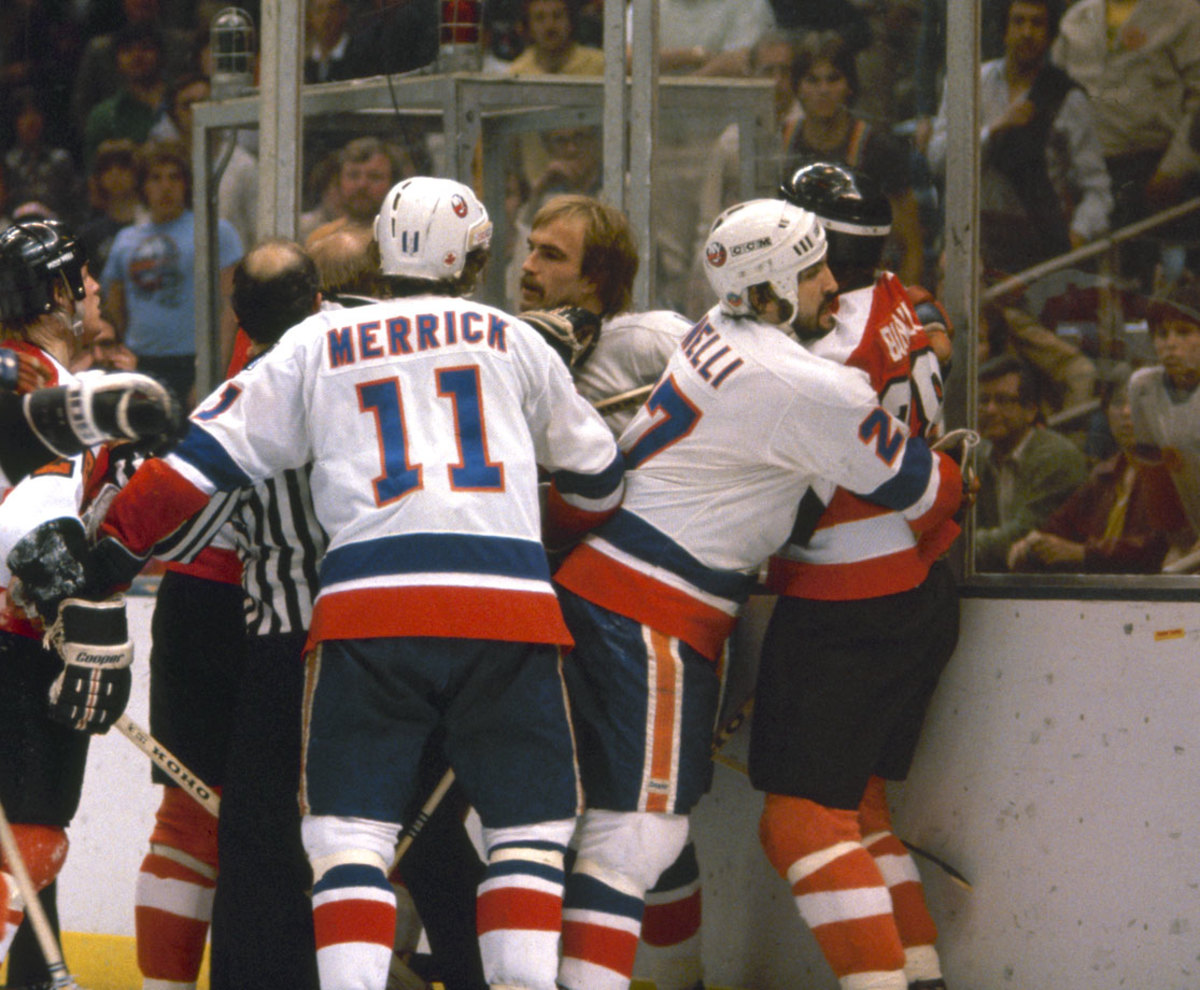
The dynastic Islanders' hardworking line was so-named because the trio wore yellow jerseys in practice.
Party Line (Chicago Blackhawks) — Steve Larmer, Al Secord, Denis Savard
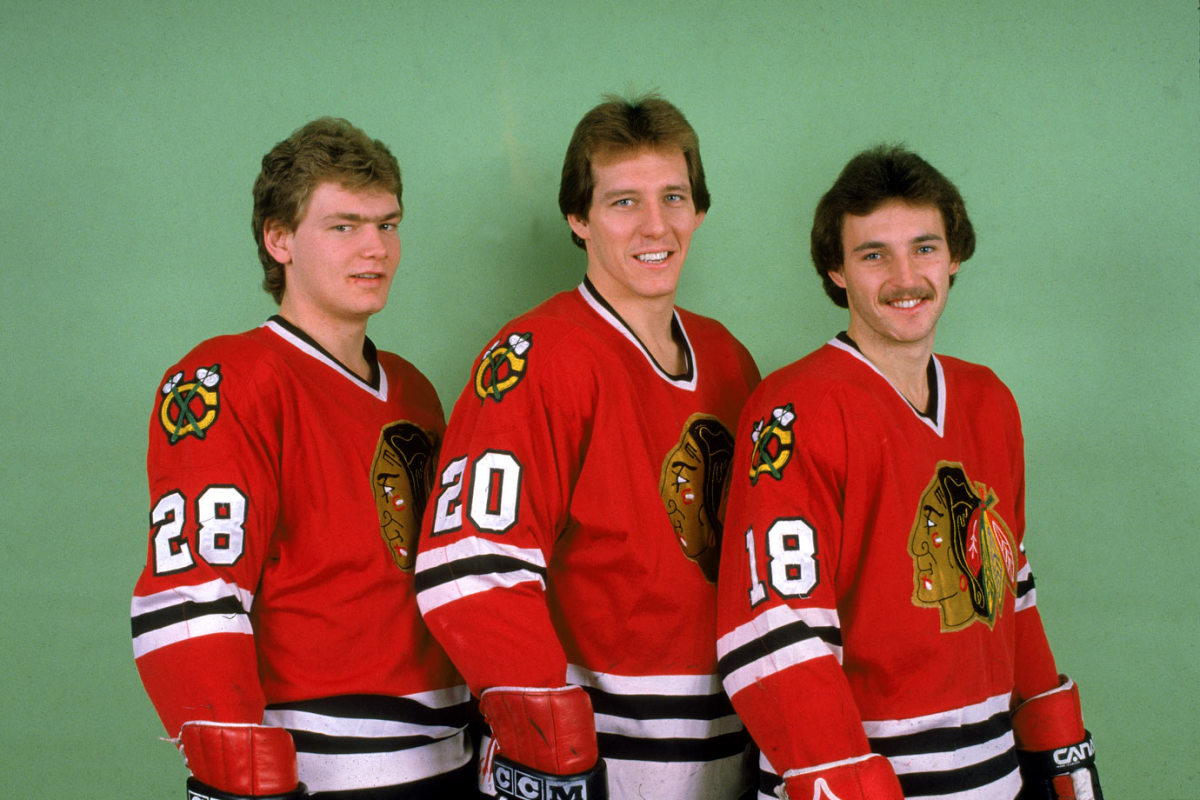
With Secord and Larmer on his wings, Savard certainly had a good time, leading the Hawks in scoring for seven seasons, including five 100-point campaigns. The trio set a team-mark of 297 total points in 1982-83, with Larmer (90) taking the Calder Trophy as the league's top rookie.
Crash Line (New Jersey Devils) — Mike Peluso, Bobby Holik, Randy McKay
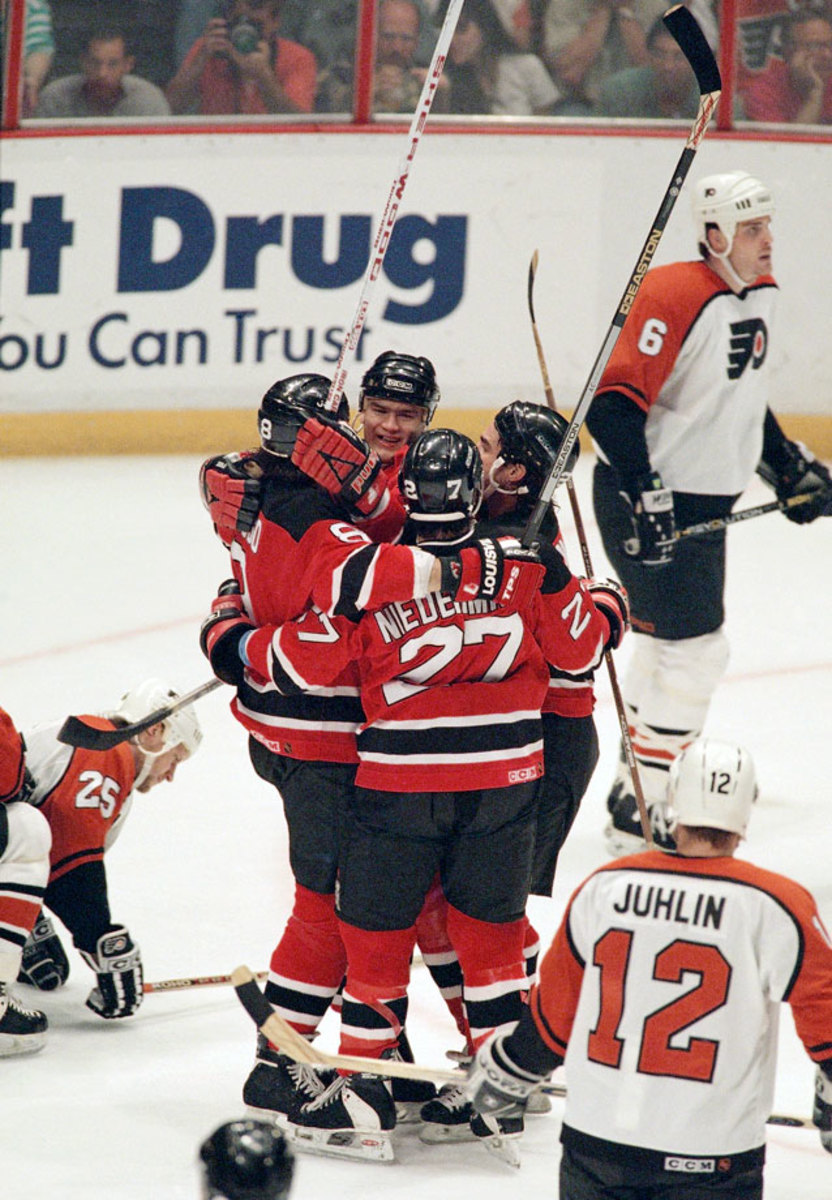
A fan favorite during the Devils' march to the 1995 Stanley Cup, this line was entrusted by coach Jacques Lemaire with the not-so-dainty jobs, like dishing big hits and hurts in the corners.
Grind Line (Detroit Red Wings) — Kris Draper, Darren McCarty, Kirk Maltby
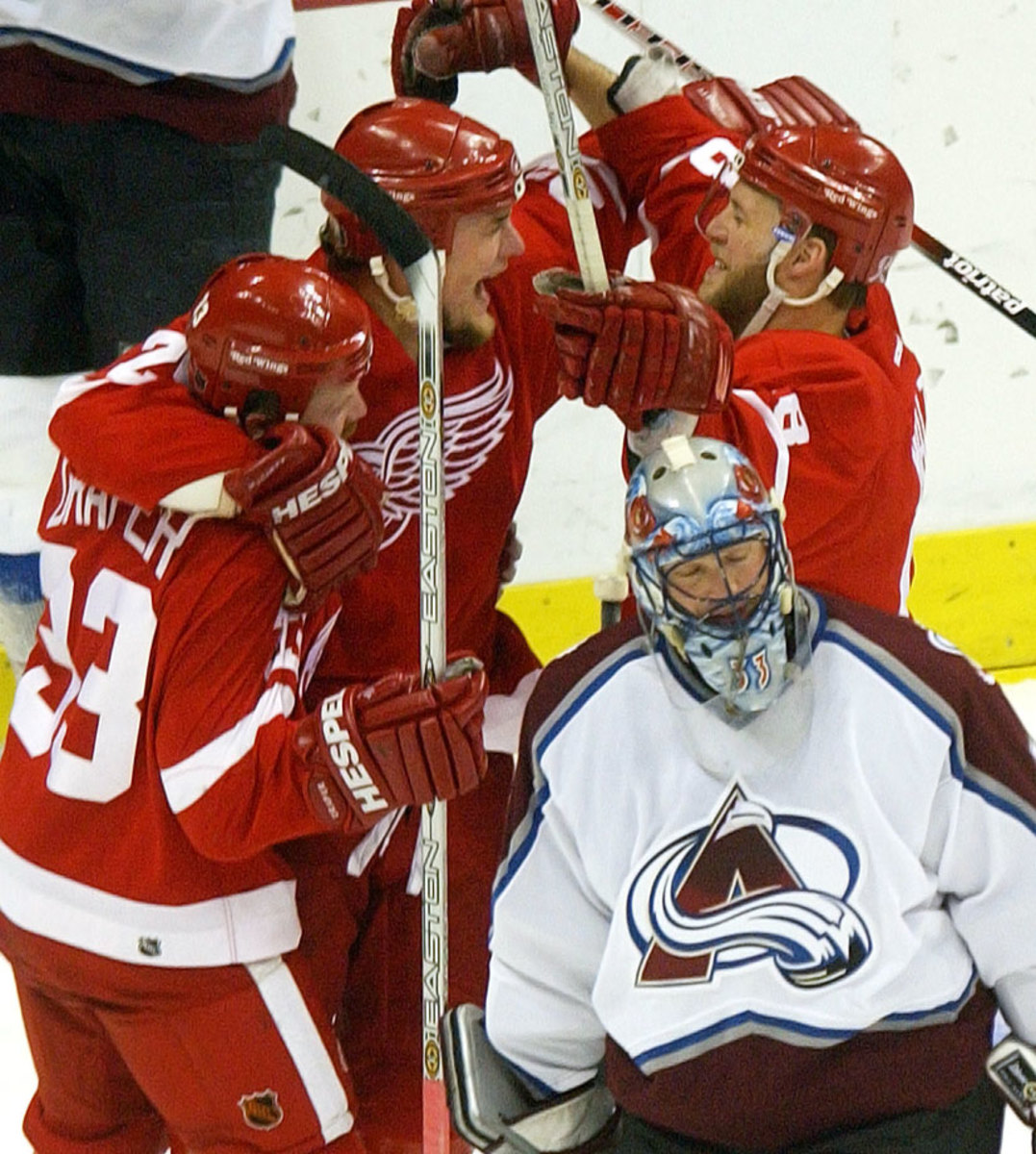
Modeled by coach Scotty Bowman after the Devils' Crash Line, Detroit's original grinders featured the more fistically-inclined Joe Kocur at right wing with Draper at center and McCarty on the other wing until an injury to Kocur opened a spot for Maltby. The line harassed and plagued Philadelphia's vaunted Legion of Doom in the 1997 finals en route to the first of two successive Cups, and remained intact until 2005.
Legion of Doom (Philadelphia Flyers) — John LeClair, Mikael Renberg, Eric Lindros
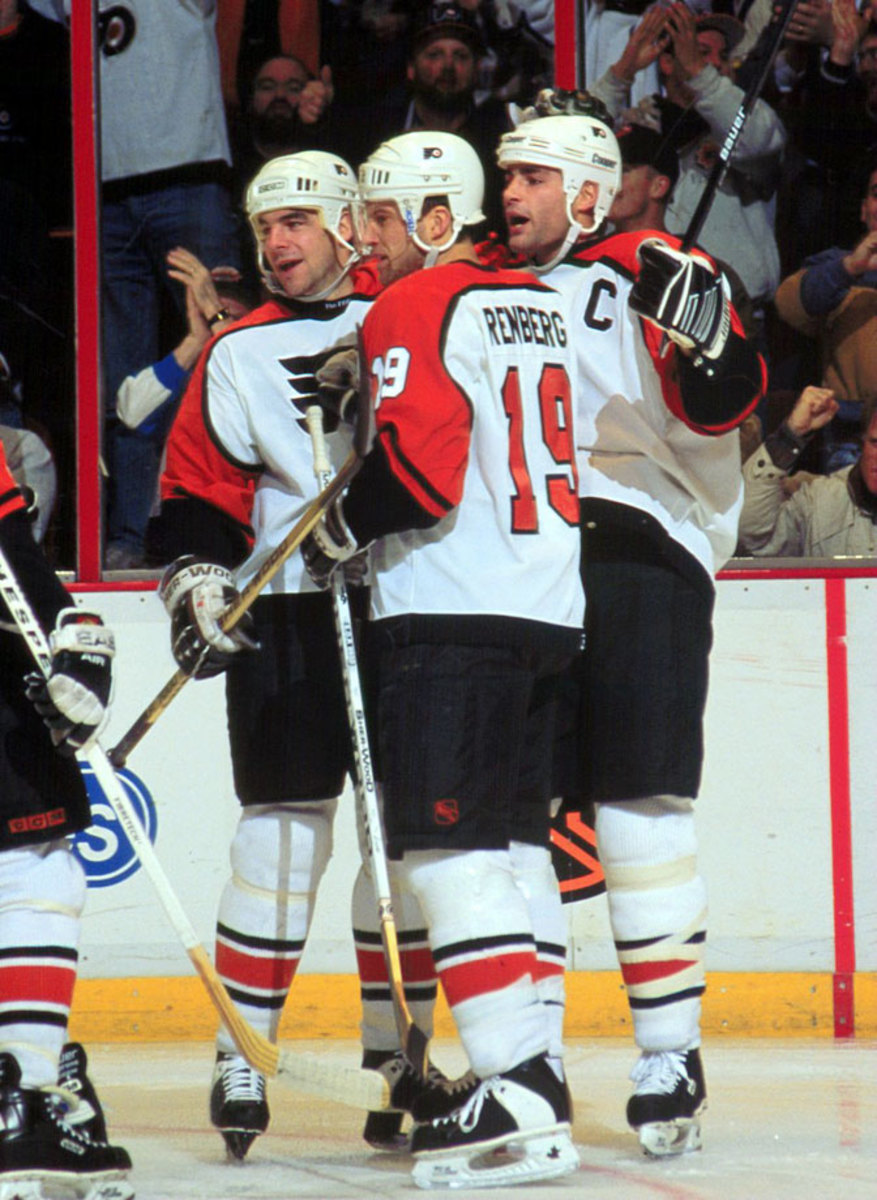
One of the league's most potent and feared lines from 1995 to 1997, center Lindros, left winger LeClair and right winger Renberg were a physically dominant trio that demanded a nickname. Bob's Big Boys (referring to GM Bobby Clarke), the Doom, Gloom and Zoom Line, the JEM Line and The Crazy Apes were considered until Flyer forward Jim Montgomery was moved to remark that they looked like "the Legion of Doom out there."
Pizza Line (Ottawa Senators) — Dany Heatley, Daniel Alfredsson, Jason Spezza
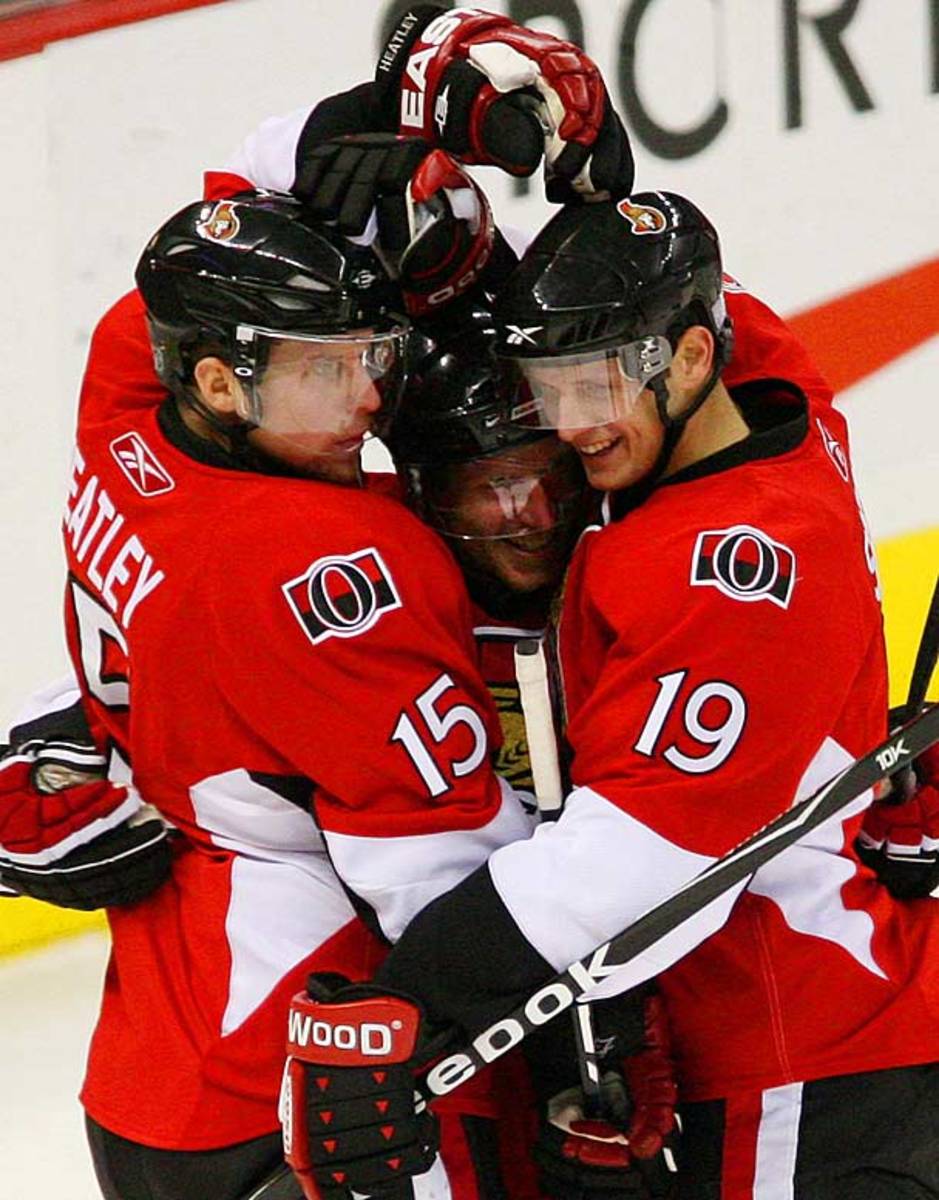
Ottawa's top line got its moniker from an arena promotion with a local pizza chain that began giving the home crowd free slices during the 2005-06 season whenever the Senators scored six goals in a win. With the gifted trio leading the way, Sens fans chowed down after nearly half of the home schedule that season.
Mattress Line (Vancouver Canucks) — Henrik Sedin, Daniel Sedin, Jason King
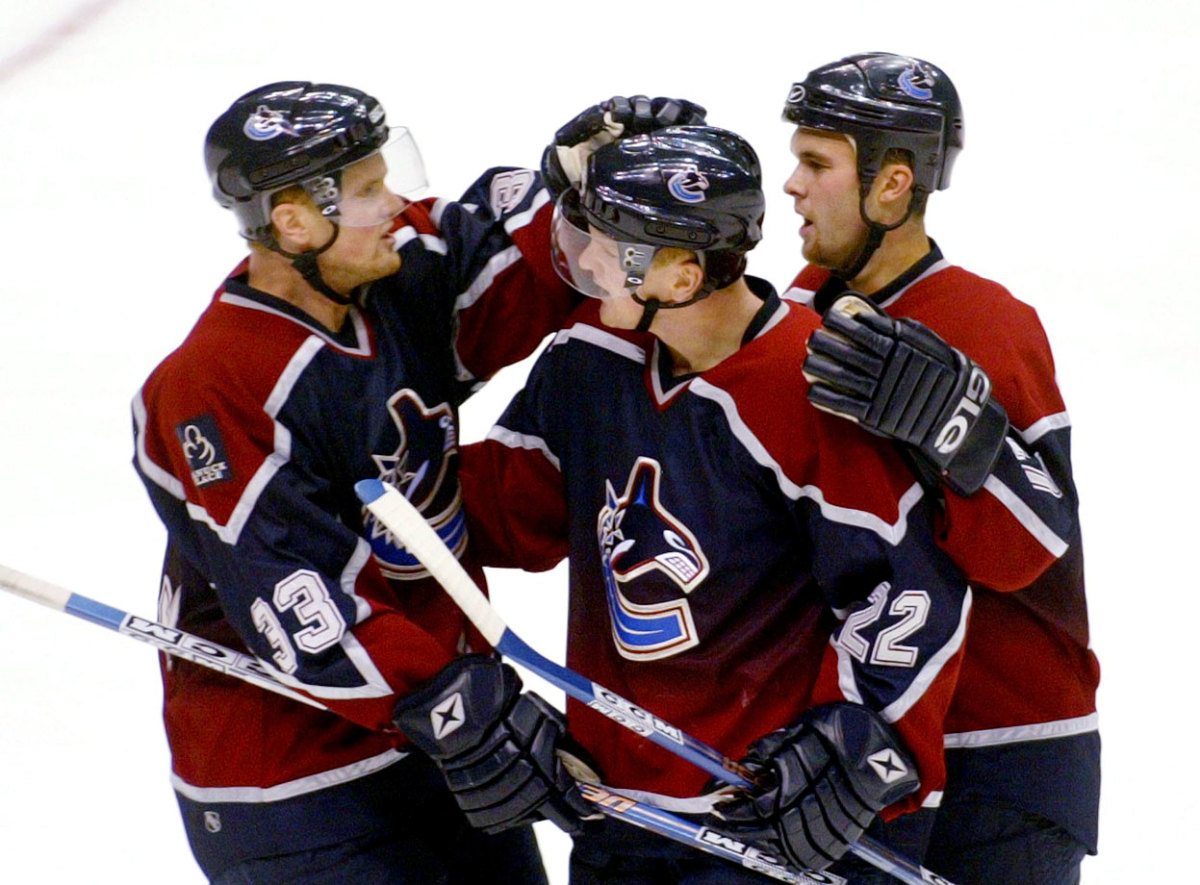
With two twins and a King on the ice during the 2003-04 season, what other name would have been more appropriate?
Czechs-Mex Line (Edmonton Oilers) — Petr Sykora, Ales Hemsky, Raffi Torres
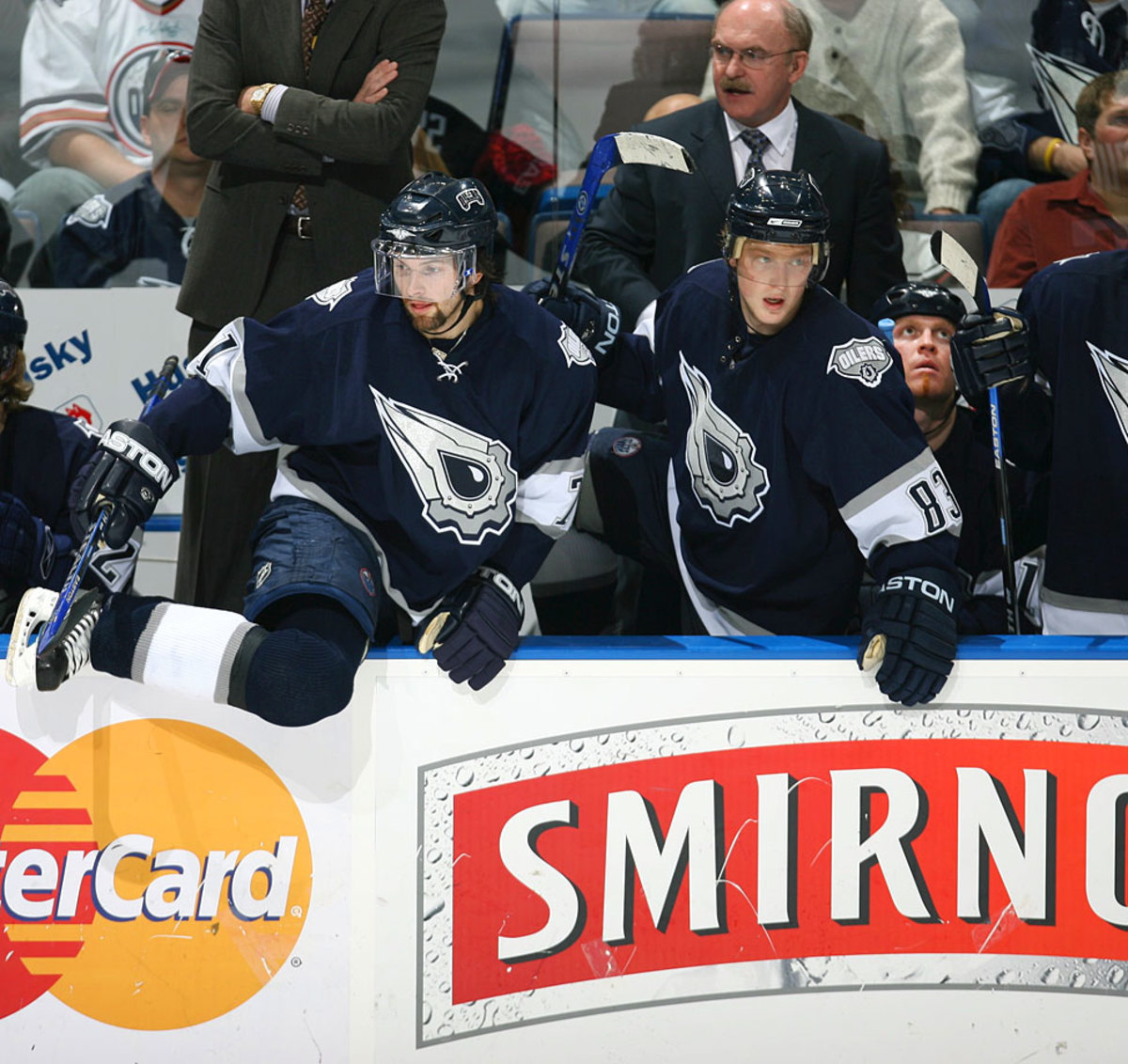
Certainly nowhere near as famous or successful as Edmonton's stellar `80s line of Wayne Gretzky, Esa Tikkanen and Jari Kurri, this short-lived line (2006-07) scored points with us for its clever moniker based on the trio's ethnic heritages.
Egg Line (New Jersey Devils) — Patrik Elias, Brian Gionta, Scott Gomez
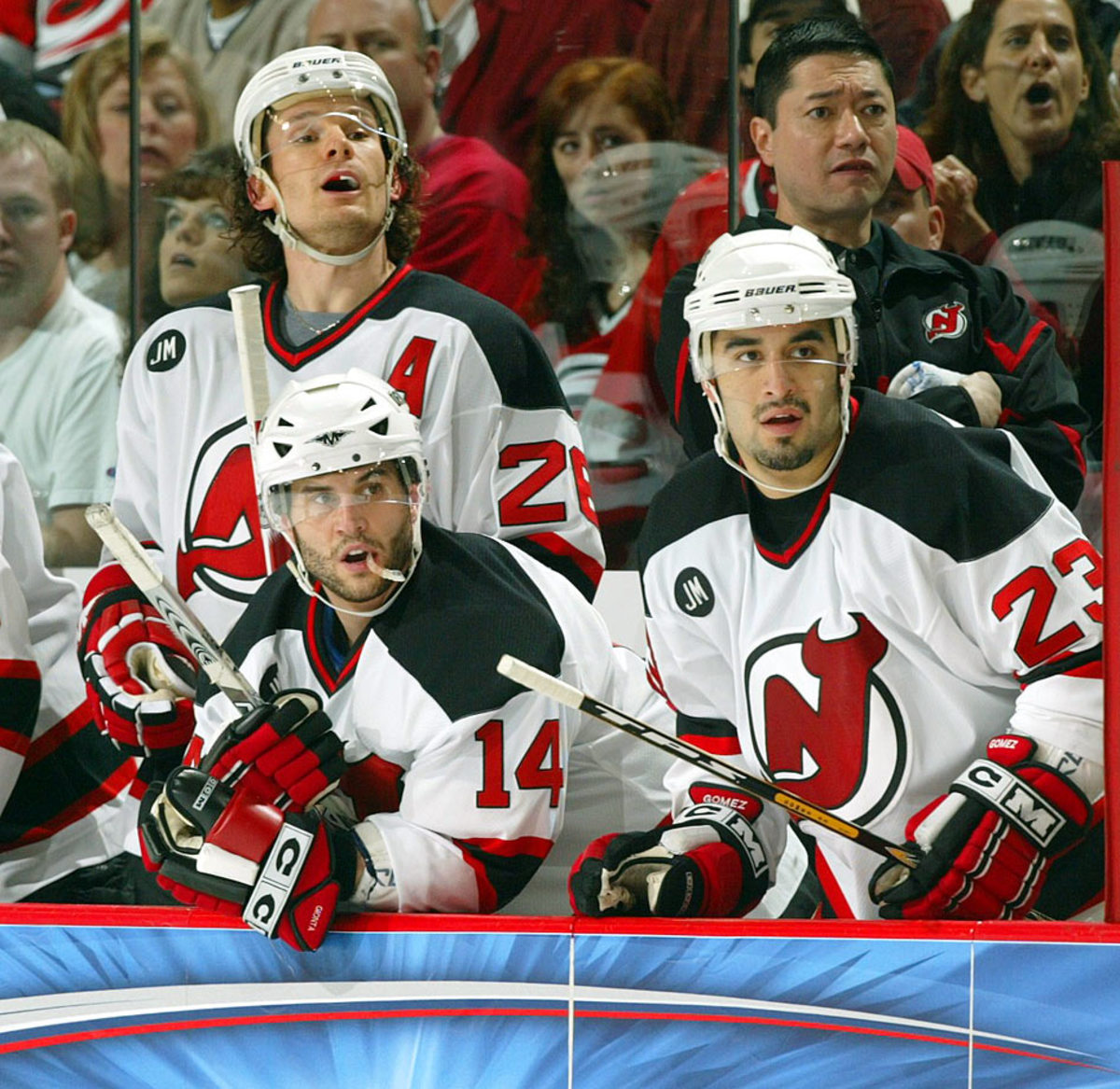
No yoke, this one is an acronym for the first letters of the trio's last names and it provided headline writers at local papers with endless fun, such as this one from the April 1, 2007 edition of the New York Post: LATEST GOMEZ INJURY KEEPS EGG LINE BROKEN.
MVP line (Tampa Bay Lightning) — Vaclav Prospal, Vincent Lecavalier, Martin St. Louis
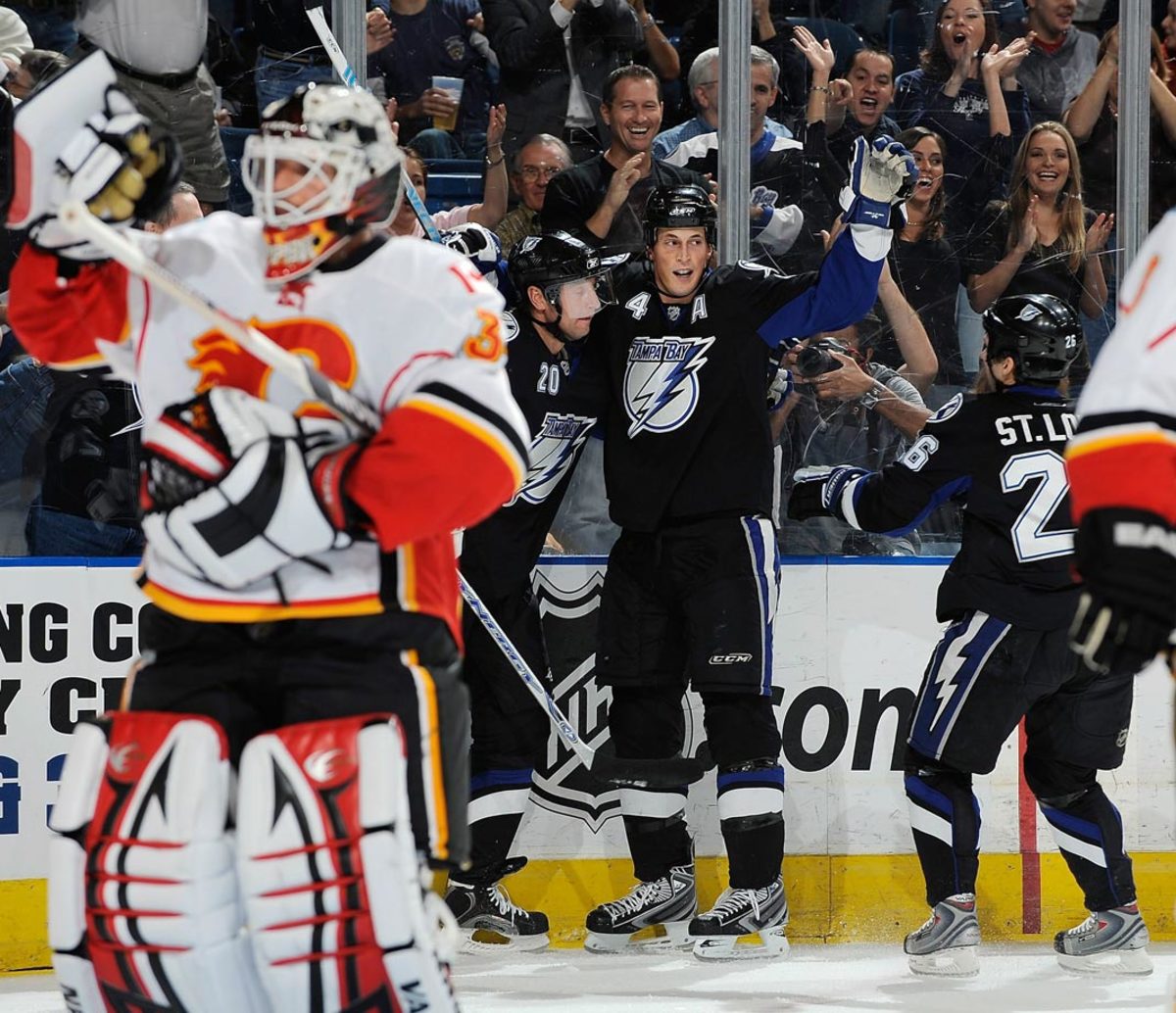
Reunited for three stints together in Tampa (2001-03, 2005-08, 2008-09), left winger Prospal was apparently the only member of the trio not on a first-initial basis with Bolts fans.
KLM line (Red Army) — Vladimir Krutov, Igor Larionov, Sergei Makarov
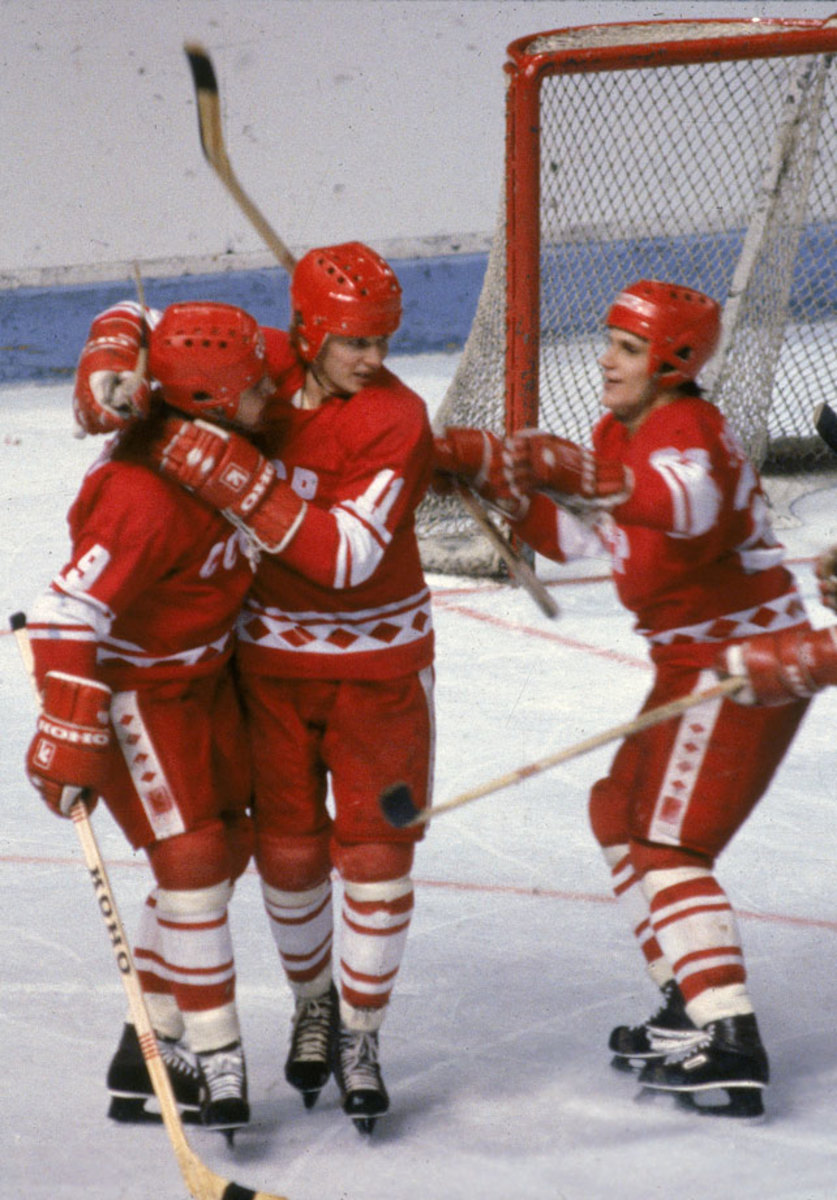
While we're talking acronyms, no list is complete without the Soviet Union's world beaters from the 1980s.
E=mc2 Line (New York Islanders) — Matt Martin, Cal Clutterbuck, Casey Cizikas
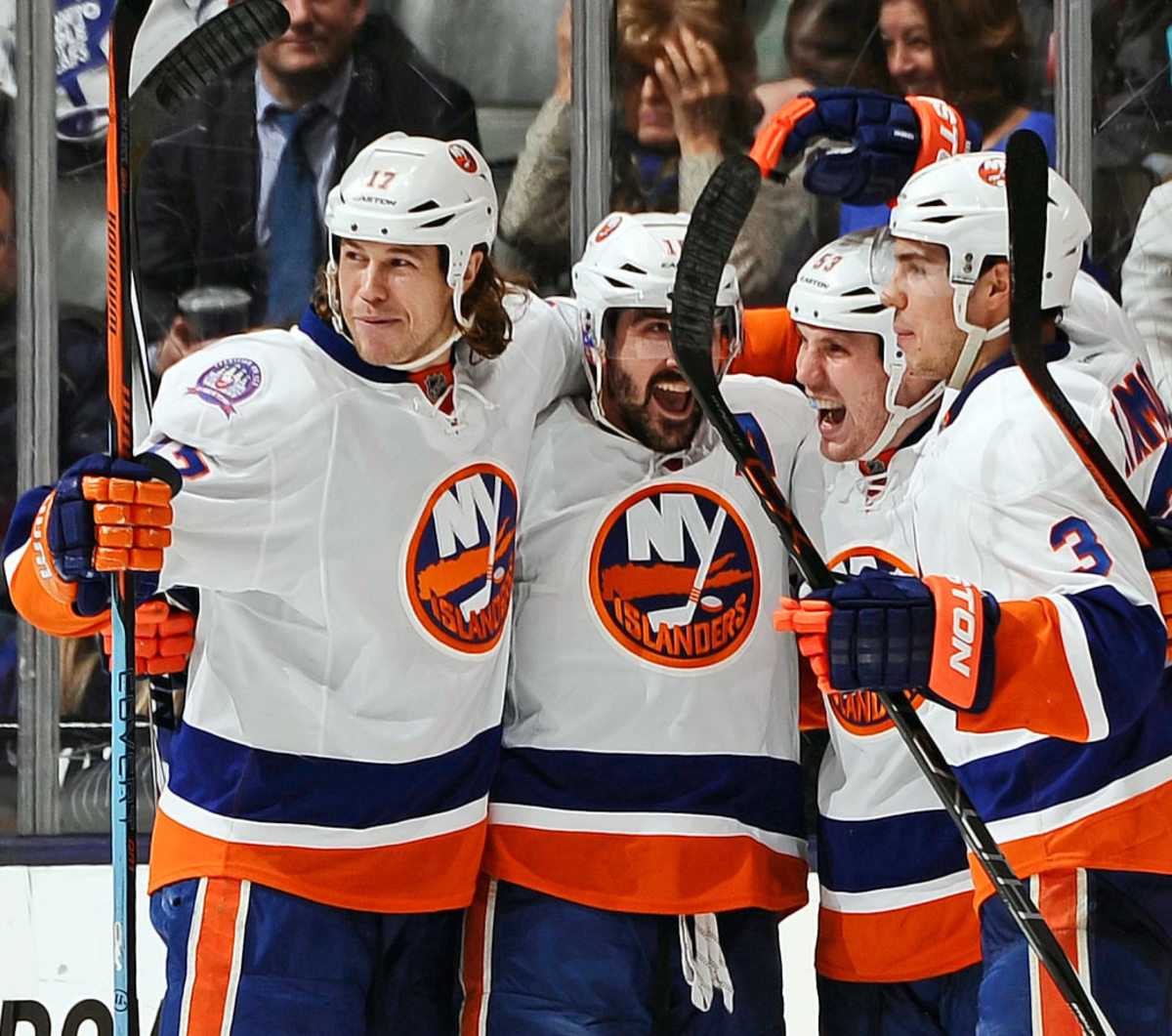
Nicknamed by broadcaster and former Islander Butch Goring, New York’s Energy unit of Matt Martin, Casey Cizikas and Cal Clutterbuck bring the hits (a combined 829 during the 2014-15 season; with Martin and Clutterbuck finishing 1-2 in the league), toughness, speed, pressure and a touch of scoring. Hockey Night in Canada’s Don Cherry was so impressed he pronounced them the best fourth line of all time.
The Triplets (Tampa Bay Lightning) — Tyler Johnson, Nikita Kucherov, Ondrej Palat

Lightning coach Jon Cooper once said Tyler Johnson, Ondrej Palat and Nikita Kucherov are so in synch when they’re on the ice they’re like triplets. Thus was a popular nickname born. Comprised of an American (Johnson), a Czech (Palat) and a Russian (Kucherov), the line’s formidable mix of speed, skill (a combined 74 goals and 200 points) and smarts was a key to Tampa Bay’s run to the 2015 Stanley Cup Final. The trio also finished in the NHL’s top four in plus/minus: Kucherov (+38, tied for first), Johnson (+33, third), Palat (+31, fourth).
That 70's Line (Los Angeles Kings) — Jeff Carter, Tanner Pearson, Tyler Toffoli
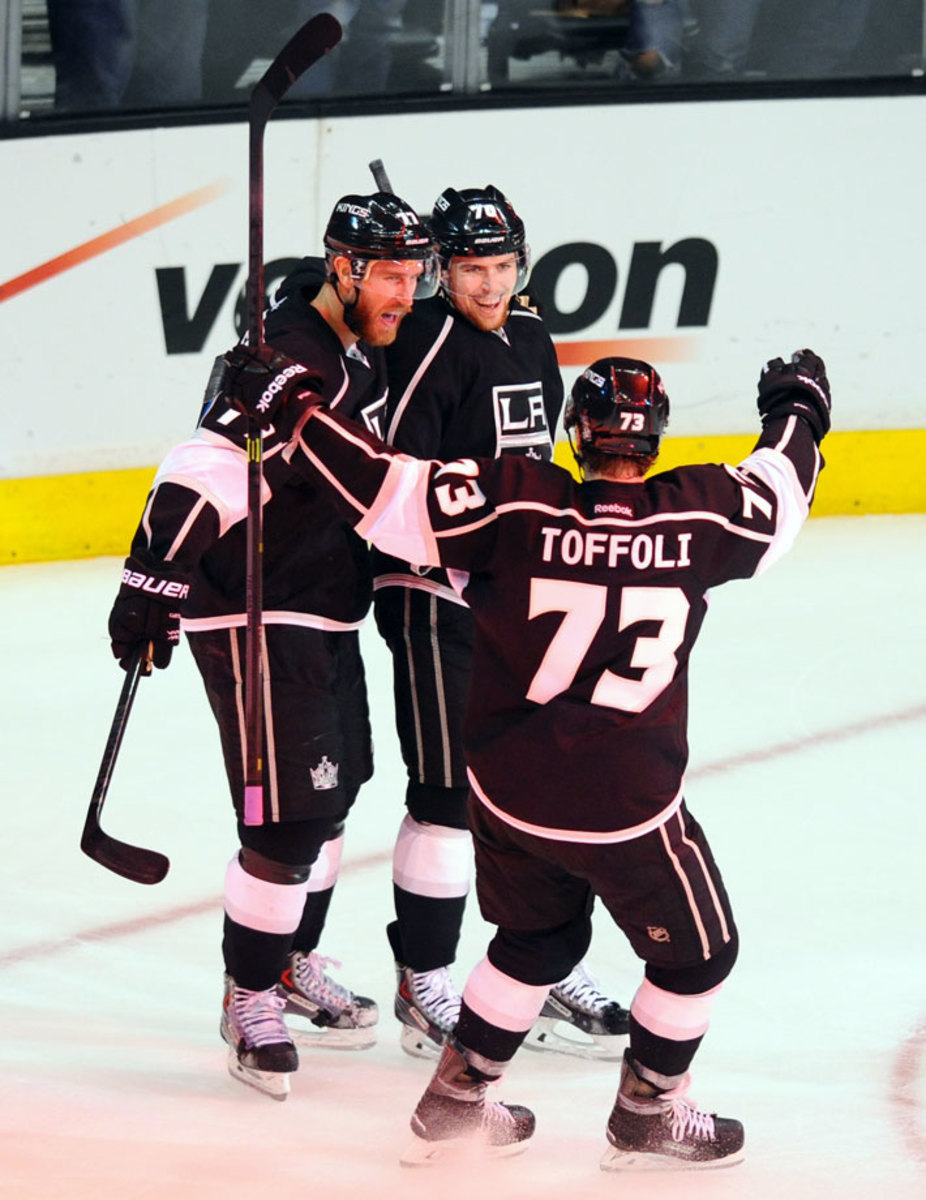
Created during the Kings’ run to the 2014 Stanley Cup and named for TV’s popular sitcom “That '70s Show” and their uniform numbers, Tanner Pearson (70), Jeff Carter (77) and Tyler Toffoli (73) proved to be a speedy, hardworking and dangerous scoring unit. Youngsters Pearson and Toffoli were linemates in the AHL and teaming them with tenacious veteran Carter lit a spark. "Usually on a line there's one guy who's the passer, one guy who's the shooter and one guy that is the digger, Kings player personnel director Michael Futa told NHL.com during the 2014-15 season. "They all seem to be willing to dig for each other and they can shoot from anywhere.”
The Merlot Line (Boston Bruins) — Gregory Campbell, Shawn Thornton, Daniel Paille
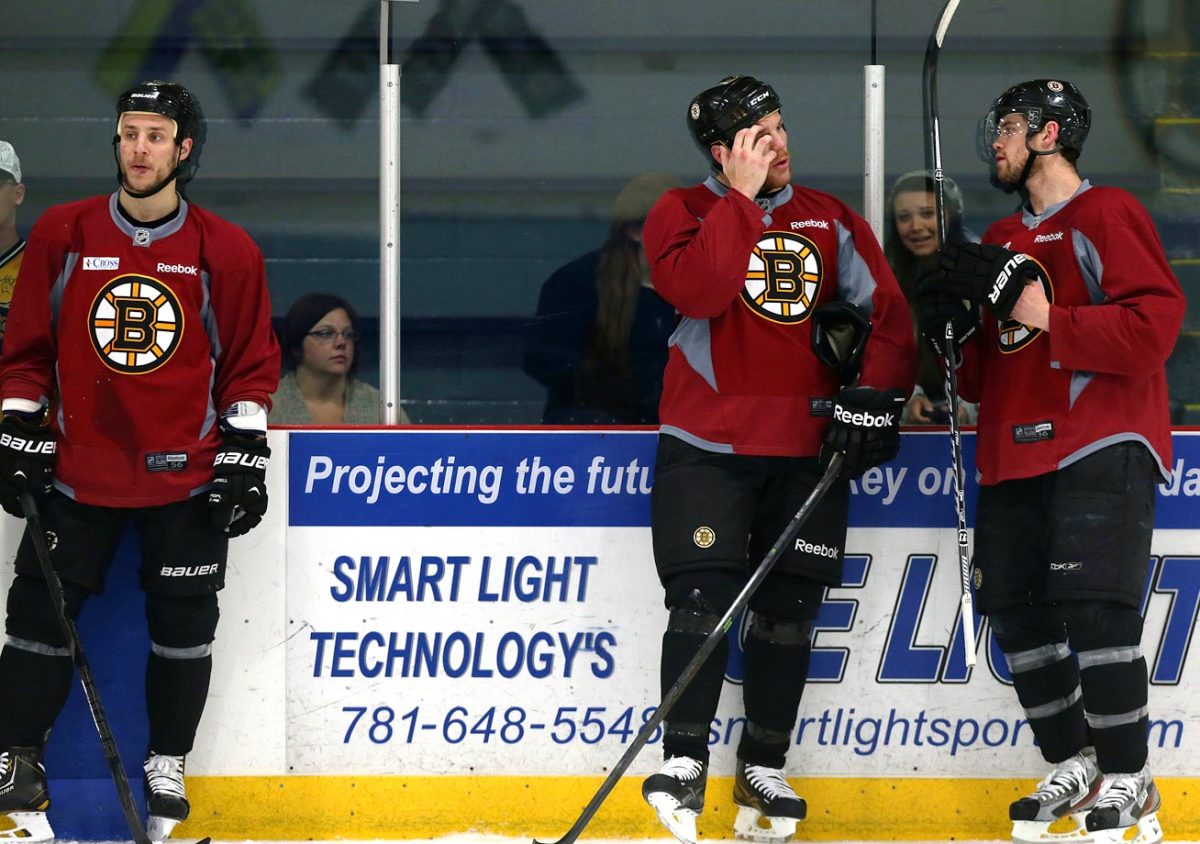
Nicknamed for their wine colored practice jerseys, Boston’s fourth line of Shawn Thornton, Gregory Campbell and Daniel Paille made a splash during the Bruins’ march to the 2011 Stanley Cup. Hardworking and previously under-sung, the forechecking trio was versatile enough to fill gaps on the team's top lines when injuries struck and match up against opponents’ top units.
